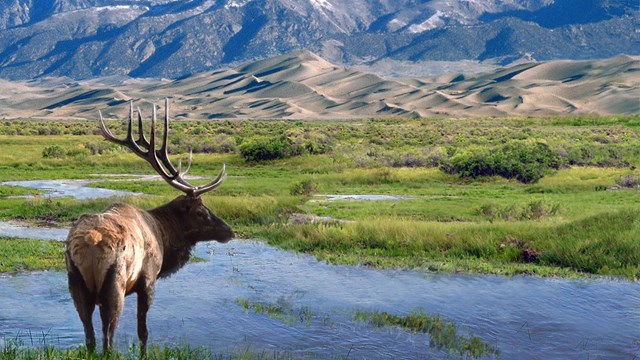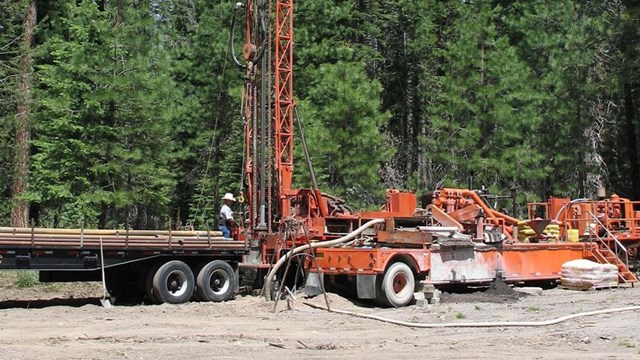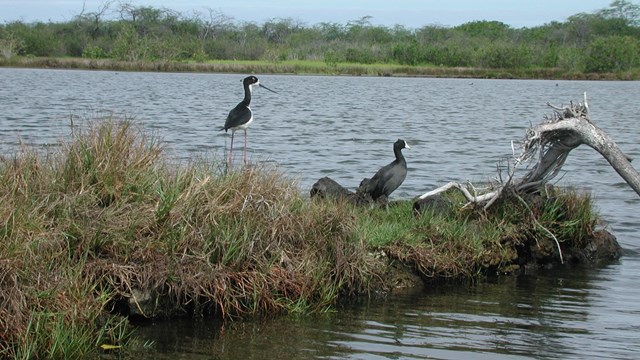
NPS Photo
Background
Population growth in more arid parts of the country coupled with fully appropriated surface water resources is placing more stress on groundwater systems. The growing demand for groundwater threatens sources of water supply and groundwater dependent ecosystems in Parks.
Groundwater-dependent ecosystems provide essential habitat for species that depend on the flow or chemical characteristics of groundwater for all or some part of their lifecycle. Lakes, streams, tide pools, wetlands, dune fields, springs, seeps, caves, and phreatophytes are examples of groundwater-dependent ecosystems found in National Parks.
What is groundwater sustainability?
Groundwater sustainability is the development and use of groundwater resources to meet current and future beneficial uses without causing unacceptable environmental or socioeconomic consequences (USGS Circular 1186). The NPS further defines sustainable principles as those choices, decisions, actions and ethics that will best achieve ecological/biological integrity; protect qualities and functions of air, water, soil and other aspects of the natural environment; and preserve human cultures (NPS 2006 Management Policies). Although many states have recognized the importance of sustainable water use, most states have not explicitly incorporated sustainability principles into the laws and policies that guide their allocation of groundwater.
Why is groundwater important in Parks?
The protection and preservation of groundwater is essential to fulfilling the mission of the NPS and the agency’s obligations under the Endangered Species Act.
Groundwater provides many valuable services for National Parks, such as:
• Potable water for visitors and staff;
• Recreational opportunities;
• Diverse habitat for plants, fish, wildlife, and pollinators;
• Water for traditional cultural uses and practices;
• Base flows in rivers;
• Water purification; and
• Flood control.
How does the Groundwater Sustainability Program help Parks?
The Groundwater Sustainability Program collaborates with Park and regional staff, the NPS Inventory and Monitoring Division, water management agencies, and other stakeholders to monitor, understand and protect groundwater-related resources in Parks. Issues addressed by the Program include:
Groundwater as a source of water supply
• Identify sources of potable water
• Determine consumptive use requirements
• Evaluate sustainability of groundwater withdrawals
• Compliance with state permitting and sustainability requirements
Protecting groundwater-dependent species and ecosystems
• Identify ecosystems that depend on access to or discharge of groundwater
• Determine ecological water requirements
• Develop sustainability thresholds and triggers for management action
• Strategies for acquiring groundwater rights or other protective measures
• Delineate areas or activities that may affect groundwater discharge
Groundwater models to sustainably manage groundwater withdrawals
• Review, develop or run analytical and numerical models
• Estimate groundwater-level declines, streamflow depletions and the capture of aquifer discharge
See below to learn more about Groundwater Sustainability projects, or contact Paula Cutillo or Steve Rice for more information.

The Park's dunes, creeks and wetlands, and water supply for visitors and staff rely on a shallow groundwater system.

Groundwater provides a supplemental source of water for the Park when surface water diversions are curtailed.

Groundwater helps to provide habitat for culturally important native fish and endangered waterbirds in Aimakapa Fishpond, Hawaii.
Last updated: February 8, 2018
